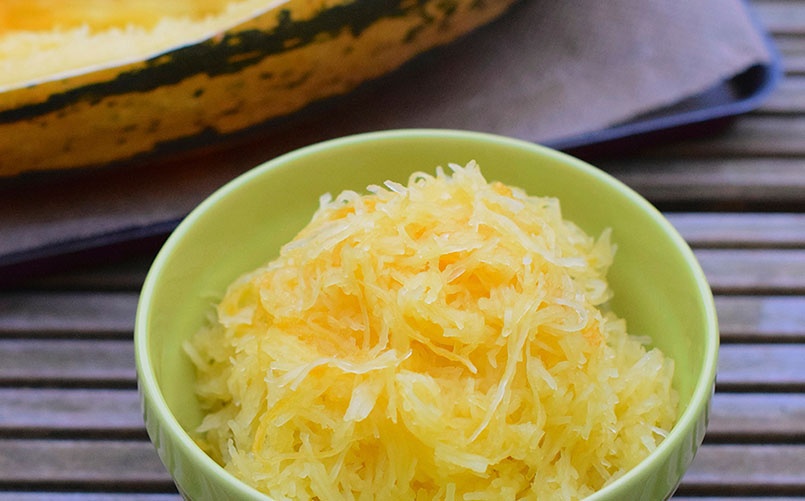WINTER SQUASH grows in the summer but is not harvested until September or October. It is best eaten when fully mature and cooked (unlike summer squash which is best when harvested young and can be eaten raw). When winter squash is fully mature, the skin hardens into a tough rind, which allows for most varieties of this fruit to be stored all winter – up to 6 months in a cool (50 degrees), dark place. They will keep for about 2-3 months on your counter or in your pantry.
WINTER SQUASH is can be prepared in a variety of ways, and has an excellent flavor and texture. They can also be a very beautiful addition to your meal. Some of the common varieties include acorn, buttercup, spaghetti squash, and butternut. Try them all, or try one kind and prepare it in a variety of ways.
WINTER SQUASH is nutritious. It is naturally low in calories, but be careful what you put on it! It is a good source of fiber, vitamin A, potassium, vitamin C, many B vitamins, beta carotene (typically, the darker the skin, the more beta carotene), other nutrients and anti-oxidants.
Spaghetti Squash
1 spaghetti squash, 1 head garlic, salt, pepper
olive oil, vegetables or meat or cheese
Directions
- Preheat oven to 350-375.
- Cut spaghetti squash in half with a sturdy sharp knife, scoop out, and discard the squash “guts” with a spoon.
- Place halves onto an oven safe cooking dish face up.
- Clean head of garlic and thinly slice garlic, (the larger pieces of garlic brown nicely, and offer a wonderful layer of complexity to the dish).
- Spread garlic into the bowl like shape of the squash, salt and pepper vigorously, drizzle with a 50/50 mixture of olive oil, and vegetable oil (get the oil everywhere inside the squash).
- Place onto the upper middle rack of the oven for about 30-40 minutes. (You will know it is ready when the squash separates with little resistance from the skin).
- Remove from oven, and place in coldest location possible for at least 20 minutes, before separating from skin.
- Use a fork to scoop and separate squash strands, add any other ingredients you like at this point.
- Parmesan, Romano, or Pecorino, Feta, are all excellent additions to this dish, as well as, meat, sausage, veggies, olives, the list is endless.
- If you use a loose tomato based sauce DO NOT add it immediately to the squash; this makes the squash runny, mushy, and unpalatable. Instead garnish the dish with a little bit of sauce atop the squash, and then offer more sauce on the side, in a separate dish.
http://low-cholesterol.food.com/recipe/properly-prepared-spaghetti-squash
For questions please call Community Health at 715-478-4355 or check out our website at cmh.fcpotawatomi.com for more information.


